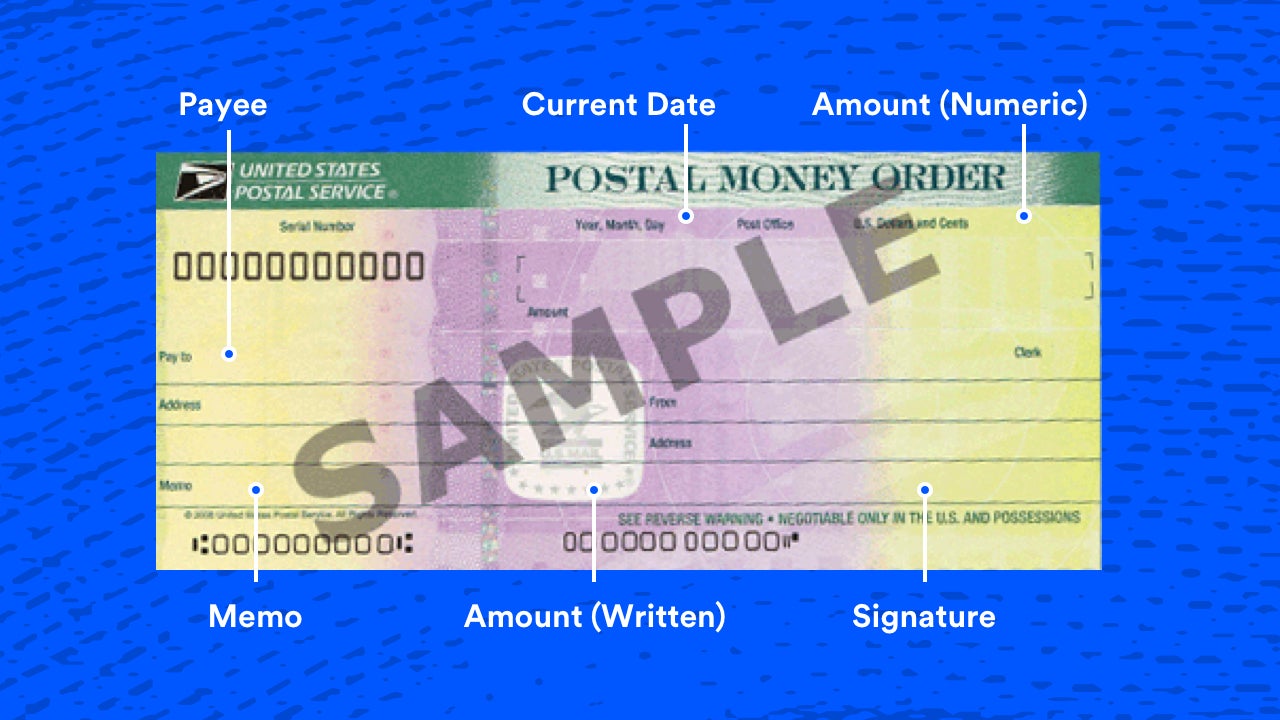How to fill out a money order




Key takeaways
- Money orders are a secure way to send and receive payments as they are prepaid and cannot bounce like checks.
- They can be purchased with cash or a debit card at various locations such as banks, credit unions and grocery stores.
- It is important to fill out all fields accurately and legibly to avoid any issues or fraud.
- Money orders can be useful for those without a checking account or for sending money without sharing bank account information.
Money orders allow you to securely send or receive payments, providing an alternative to cash, checks or credit cards. They are similar to checks, but, because they’re prepaid, money orders can’t bounce.
They can, however, get canceled or refunded if not filled out correctly. It’s important to know what information you’ll need to fill one out and where that information goes.

What you need to fill out a money order
The requirements to fill out a money order vary by institution, whether its Western Union or the U.S. Postal Service (USPS). Each institution’s money order may differ slightly in appearance as well. Generally, the information you’ll need to fill out a money order is:
- Name of payee (i.e., the person being paid)
- Payee’s address
- Payment amount
- Your name and address
- What the payment is for and/or the billing account number
You’ll also need a form of payment to purchase the money order. Some issuers limit your payment options, too. You likely won’t be able to purchase a money order with a credit card.
Steps to fill out a money order
1. Fill in the name of the payee
Write the name of the payee of the money order in the “pay to” or “pay to the order of” field. This could be a person’s name or the name of a business. Print the name clearly in ink.
It’s important to fill out this section as soon as you purchase the money order, since this will be the only person authorized to cash or deposit it. If the money order is lost or misplaced without a payee’s name written down, it could be liable to fraud and someone else could write their name on it.
If given the option, fill out your name in the field labeled “from,” “purchaser” or “sender.”
2. Include your address in the purchaser section
Fill in your address where the money order asks for the purchaser’s address. There may be a second address field for filling in the address of the payee. If so, you’ll want to fill that out as well.
3. Write the account or order number in the memo field
A memo line allows you to note what the money order is designated for. The memo might specify that it’s a purchase for a particular item or a payment toward a debt, for example. If you have an account or order number from the payee, the memo field is also where to include that. Some money orders may say “payment for” or “account number” instead of memo.
4. Sign your name in the purchaser’s signature section
Sign the front of the money order where indicated. This section may be labeled Purchaser’s signature, Purchaser, From, Signer or Drawer. Don’t sign the back of the money order, which is where the payee endorses it.
5. Keep your receipt
Be sure to keep the receipt because it contains a tracking number, which can be used to find out whether the right person cashed the money order. In case the money order is lost or stolen, the tracking number can help you replace it. A processing fee may apply for replacing a money order.
The receipt can also help you cancel the money order should your plans change.
What happens if a money order is filled out incorrectly?
If while filling out the “Pay to” portion of the money order causes it to be “spoiled,” then you can have it replaced, according to the USPS.
You might be able to write “not used for purpose intended” on the back of your money order and cash it. Check with your bank and the money order issuer for their policies on this.
At Western Union, you can’t change the payee’s name on the money order but you can submit a refund request through Western Union, according to its website.
How to purchase a money order
Money orders can be purchased with cash or a debit card at banks and credit unions, check-cashing businesses, the U.S. Postal Service, many grocery stores and some big-box stores.
Avoid using a credit card to purchase a money order, since your credit card company may consider the purchase a cash advance and charge steep fees. Some issuers won’t accept credit cards as payment, either.
There may be limits on the size of the money order you can purchase. The Postal Service, for example, allows you to buy money orders up to $1,000 if you’re sending it within the U.S. On top of the price of the money order, a $1–$10 fee typically applies.
Benefits of using a money order
Money orders can be a useful alternative to checks or cash for paying bills, paying off debt or making large purchases, especially for those who don’t have a checking account.
They’re a safe paper option for those who want to avoid a payment bouncing — they can’t be declined for insufficient funds, since they are prepaid. Money orders also don’t require the purchaser to have a bank account since they can be purchased without one, such as with cash.
Additionally, money orders are a good alternative to electronic payments when you prefer or are required to send money through the mail. They don’t contain bank account information, so it won’t end up in the wrong hands. Plus, as with a check, only the recipient can cash the money order.
Bottom line
Money orders are a safe and reliable option for sending and receiving payments. They can be purchased with cash or a debit card and offer a secure alternative to checks or cash. It is essential to fill out all necessary fields accurately and legibly to avoid any potential issues or fraud.
Money orders are a valuable tool for those without a checking account or for sending money through the mail without sharing sensitive bank account information. Consider using a money order for your next payment and enjoy the peace of mind that comes with this secure method.
– Freelance writer Mitch Strohm contributed to a previous version of this article.




